In the world of managing hotels, one tool is essential which is the occupancy report. It helps you to see how well your hotel is doing and guides you in making smart decisions, especially when there is a lot of competition. In this article, I will talk about why occupancy reports are so important, explain the important numbers in them, and share some ideas to get more guests to stay at your hotel, so you can keep being successful even as things change in the hotel industry.
What Is an Occupancy Report?
An occupancy report is known as a report that provides information related to the occupancy rates of the hotel to estimate hotel performance based on the number of rooms occupied. Based on the data provided by Tourism Malaysia (2023), the average occupancy rate in Malaysia was approximately 60% before the pandemic.
During the pandemic period, the average occupancy rate declined by half to 29.55 %. After the COVID-19 pandemic in 2022, the average occupancy rate showed a remarkable increase to 55%. From the data obtained, it can be seen that the tourism industry is recovering well from the pandemic since the government reopened the domestic and international borders.
Dominant Metrics in an Occupancy Report
1. Occupancy Rates
Before delving further into occupancy reports, you need to understand the fundamentals of occupancy rates. The occupancy rate shows the proportion of rooms occupied out of the total available rooms..png?width=1640&height=924&name=Blog%20Images%20(9).png)
Generally, cancelled and no-show reservations are not included in the total rooms occupied because the guests do not occupy the rooms. However, some hoteliers prefer to include no-show reservations as they reserve the room for the guest whether the guest will check in to the room or not.
On the other hand, the total available rooms will not include out-of-order rooms but only out-of-service rooms. Out-of-order rooms are rooms that are temporarily unavailable due to renovation or maintenance. These rooms will be deducted from the room inventory and the guests will not be assigned to these rooms. Hence, they will not be included in the total available rooms.
Conversely, out-of-service rooms are rooms that undergo short-term maintenance. It will not be deducted from the room inventory. However, the guests will not be assigned to these rooms until other rooms are fully assigned. Since these rooms are available for sale, they are still included in the total available rooms.
2. Average Daily Rates
Other than the occupancy rate, the average daily rate (ADR) is another dominant metric in an occupancy report. ADR is the average room revenue per occupied room.
.png?width=1640&height=924&name=Blog%20Images%20(10).png)
This can be used to understand the average revenue each room brings. For example, it will be useful when the hotel is performing with a good occupancy rate but low ADR. By understanding the hotel's average revenue for each room, you can find opportunities by increasing the room revenue reasonably to increase revenue.
3. Revenue per Available Room (RevPAR)
Revenue per Available Room (RevPAR) is included in the report to know the average room revenue for each available room. This metric is considered when hoteliers wish to understand the hotel's performance more accurately as it includes rooms that are not occupied by the guests.
.png?width=1640&height=924&name=Blog%20Images%20(11).png)
If the hotel is performing well enough with a high occupancy rate, the RevPAR will be close to ADR.
Why Occupancy Report is important
The occupancy report provides valuable insights into the performance of a hotel, allowing management to make informed decisions and implement effective marketing strategies. The report provides useful insights for hoteliers in a few fields from evaluating hotel performance to performance benchmarking. Here is what you can evaluate by using the occupancy report.
1. Hotel Performance
Hotel performance can be evaluated by the occupancy rate. This report provides information on the occupancy performance of a hotel. According to Jordan Hollander (2023), a good occupancy rate for a hotel is between 70% to 95%. You can know to what extent you have optimized room inventory and revenue. However, you need to understand that a higher occupancy rate does not imply higher revenue. It will all depend on the type of hotel, number of rooms, location and room price.
2. Revenue Management
The occupancy report includes information for ADR and RevPAR. With this information, you can analyze if you have optimized revenue based on the occupancy rate provided. Most importantly, you will be able to make data-driven decisions about pricing and marketing strategies.
3. Operational Efficiency
You can identify travelling seasons from the range of occupancy rates. With that, it helps you in arranging shifts for the staff and optimizes the resource allocation based on the level of occupancy.
4. Performance Benchmarking
From this report, you can know the hotel's average occupancy rate for a certain date range or season. This allows them to compare their performance with other competitors. For instance, you noticed your average occupancy rate was lower than your competitors during the school holiday in May last year. Hence, you have made some improvements in the marketing strategies this year. You will be able to track if there are any improvements in occupancy level by comparing their average occupancy rate during the school holiday this year and track if your hotel is doing better than your competitors in time round.
Strategies to Enhance Occupancy Rates
To improve the occupancy rate of a hotel, there are several innovative marketing ideas can be implemented:
- Forge Local Partnerships:
Collaborate with nearby businesses to offer exclusive promotions, leveraging each other's customer base to drive bookings. - Tailor-Made Packages:
Craft enticing packages catering to specific demographics like honeymooners or business travellers, offering value-added amenities and discounted rates. - Leverage Social Media:
Harness the power of social media to showcase unique hotel offerings, engaging potential guests with captivating content and promotions. - Tap into Online Travel Agencies (OTAs):
Partner with OTAs to expand visibility and attract a broader audience, offering special incentives to entice bookings. This can help increase visibility and attract a larger customer base. - Implement Loyalty Programs:
Reward guest loyalty with perks like room upgrades and personalized services, fostering repeat visits and brand advocacy. This can incentivize guests to choose the hotel for future stays.
A Sample of Occupancy Report
Now, you have a better idea of the hotel occupancy report. Let's take a moment to explore a real example. In this section, I presented a sample occupancy report that encapsulates the essence of our discussion thus far. Through this practical illustration, you will witness firsthand how occupancy rates, average daily rates (ADR), and revenue per available room (RevPAR) converge to paint a comprehensive picture of hotel performance.
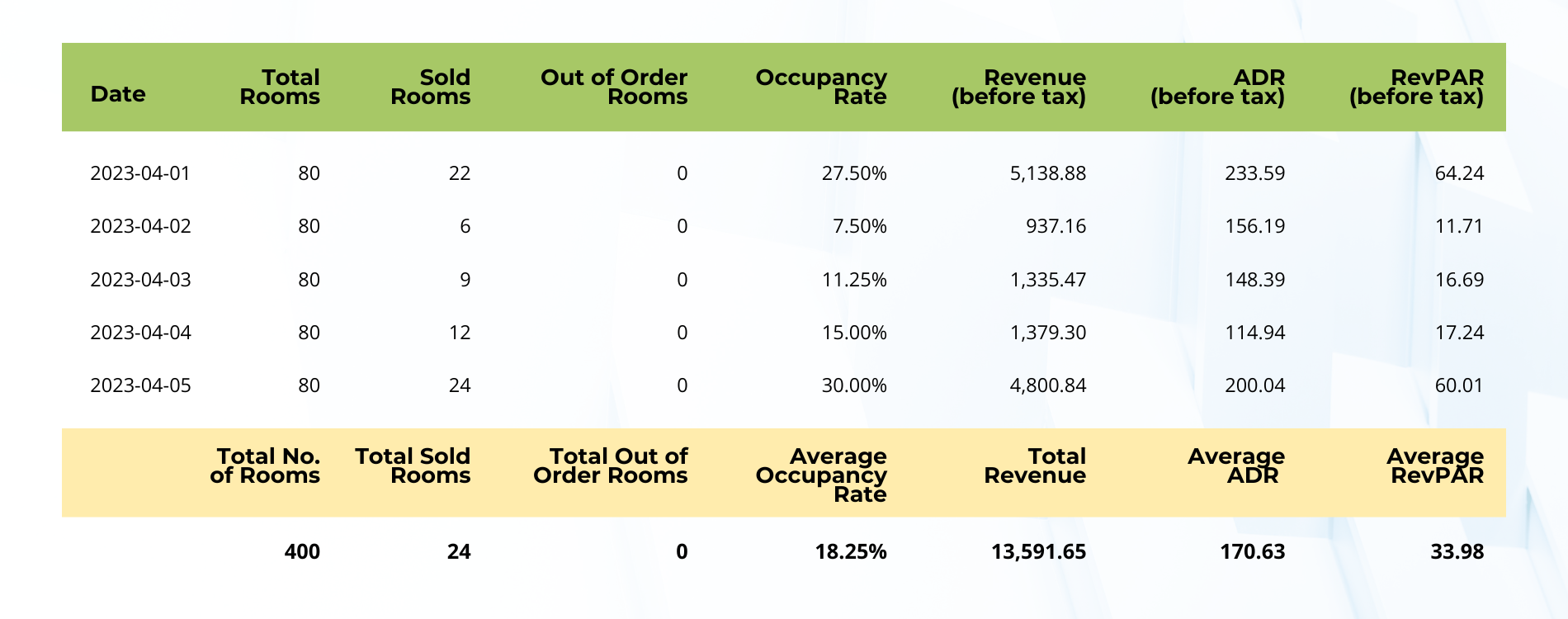
From the above, you will be able to:
- Observe the occupancy rate for each date. For example, the occupancy rate on 2nd April 2023 is the lowest among the chosen date range.
- It can be spotted that the average occupancy rate is 18.25%. April is considered the low season in the hotel industry. We can understand if this occupancy performance is considered good by comparing it with our competitors or the industry average occupancy rate.
- Observe the total room revenue received and ADR for each date and the average ADR.
- Since the occupancy rate and revenue received during weekdays are lesser, the marketing department can hold some promotions for guests who check in during the weekdays. They can focus on business travellers who will most probably travel during the weekdays.
In this report, hourly bookings are not included as the calculation of the occupancy rate will be slightly different but with the same fundamentals. Hourly bookings or day-use bookings are bookings that are made on an hourly basis. It can be from a few hours to half a day. However, hotels might set the maximum hours for an hourly booking. Commonly, the hourly booking can only be made up to 6-8 hours. If the number of hours exceeds the maximum hours, the guest will need to pay for a night. Hourly bookings are common in flight-transit hotels or business hotels, where people will choose to book a room while waiting for a flight or finding a place to work.
Here are the suggested formulas of important metrics in an occupancy report for day-use bookings:
.png?width=1640&height=924&name=Blog%20Images%20(12).png)
Conclusion
As we navigate through the intricacies of hotel occupancy, one thing becomes clear: success in the hospitality industry requires more than just luck—it demands strategic foresight, data-driven decision-making, and a relentless commitment to innovation.
It is important for hotels to continuously evaluate their marketing efforts and adapt to changing trends and customer preferences. By staying innovative and proactive, hotels can stay ahead in the competitive hospitality industry and achieve long-term success.
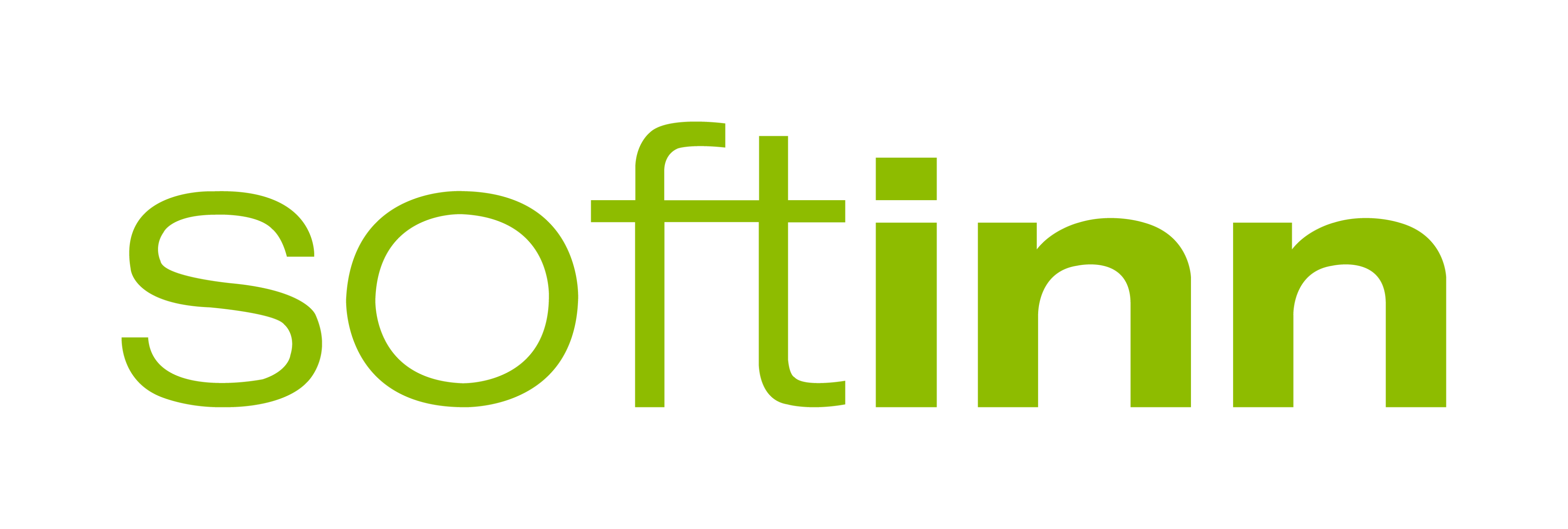
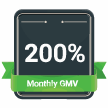

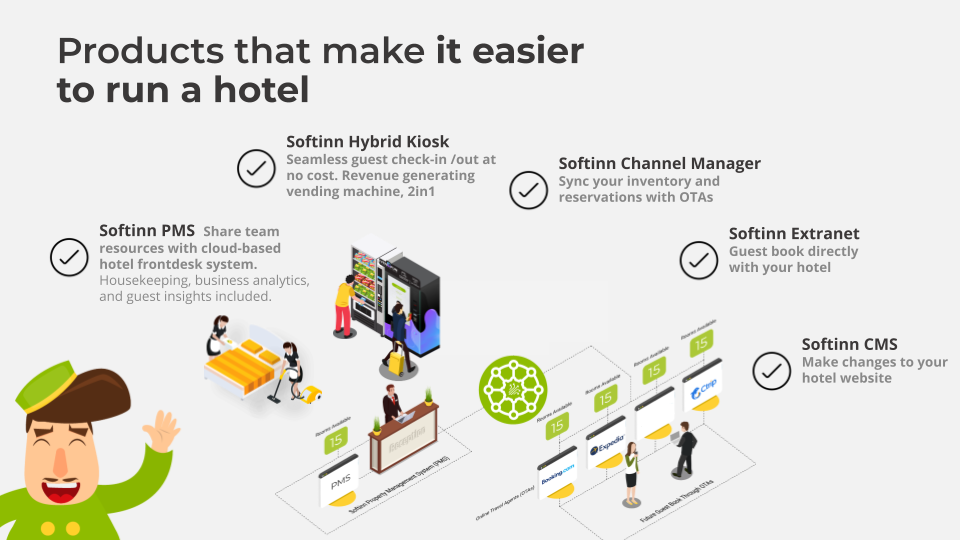
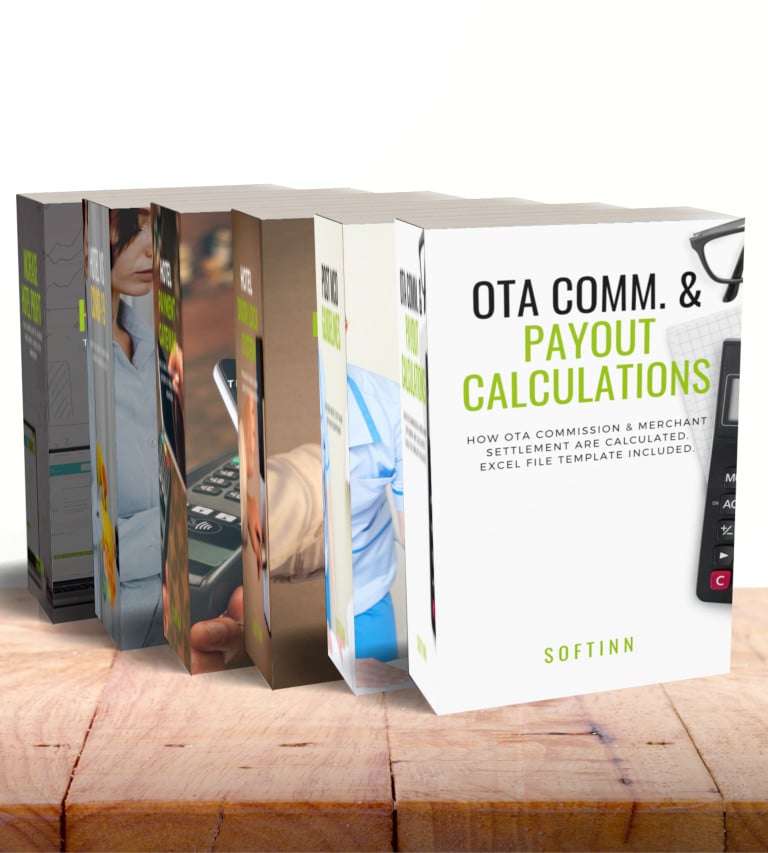





COMMENTS